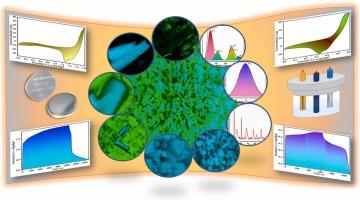核壳Mn@Al-MOF:用于高性能超级电容器的多维层次高级电极材料
IF 6.3
2区 材料科学
Q2 CHEMISTRY, PHYSICAL
引用次数: 0
摘要
金属有机框架(mof)的多维纳米结构由于其超薄的轮廓、良好的孔隙和大的表面积而成为超级电容器(SCs)的理想电极材料。然而,它们的自堆叠性质和弱导电性使其在各种应用中具有挑战性。在本研究中,利用水热方法将超薄Al-MOF纳米片接枝到棒状Mn-MOF上,制备了层叠核壳Mn@Al-MOF杂化阵列。介孔Mn-MOF“核”不仅为锚定Al-MOF提供了导电框架,而且缩短了离子扩散途径,Al-MOF“壳”具有较大的活性表面积。利用这些优势以及Al-和mn - mof之间的协同效应,制备的核壳Mn@Al-MOF杂化材料具有增强的氧化还原性能,在1A/g时具有844 F/g的比电容。结果表明,MOF杂化材料主要表现出类似电池的行为,在1 mV/s下的扩散贡献为86%。通过将核壳结构集成到正极材料中,开发了一种创新的非对称混合设计,实现了令人印象深刻的能量密度(27.26 Wh/kg)和功率密度(225 W/kg)。此外,这种多维混合阵列在10,000次充放电循环中表现出强大的循环稳定性,保留了81%的初始电容。这些有希望的结果突出了分层Mn和al基结构作为先进储能应用的强大候选者的潜力。本文章由计算机程序翻译,如有差异,请以英文原文为准。

Core-shell Mn@Al-MOF: A multidimensional hierarchical advanced electrode material for high-performance supercapacitors
Multidimensional nanostructures of metal-organic frameworks (MOFs) are ideal electrode materials for supercapacitors (SCs) because of their ultrathin profiles, well-defined pores, and large surface areas. However, their self-stacking nature and weak electrical conductivity make their use challenging in various applications. In this study, hierarchical core–shell Mn@Al-MOF hybrid arrays were prepared by grafting ultrathin Al-MOF nanosheets onto rod-like Mn-MOF using a hydrothermal approach. The mesoporous Mn-MOF “core” not only provides a conductive framework for anchoring Al-MOF but also shortens ion diffusion pathways, and the Al-MOF “shell” exhibits a large active surface area. Leveraging these advantages and the synergistic effects between Al- and Mn-MOFs, the fabricated core–shell Mn@Al-MOF hybrid exhibits enhanced redox properties with a specific capacitance of 844 F/g at 1A/g. Results indicate that the MOF hybrid material primarily exhibits battery-like behavior, with diffusion contributions constituting 86 % at 1 mV/s. An innovative asymmetric hybrid design was developed by integrating the core–shell structure into a positive electrode material, achieving impressive energy density (27.26 Wh/kg) and power density (225 W/kg). In addition, this multidimensional hybrid array exhibits robust cycling stability over 10,000 charge–discharge cycles, retaining 81 % of its initial capacitance. These promising results highlight the potential of hierarchical Mn- and Al-based configurations as formidable candidates for advanced energy storage applications.
求助全文
通过发布文献求助,成功后即可免费获取论文全文。
去求助
来源期刊

Journal of Alloys and Compounds
工程技术-材料科学:综合
CiteScore
11.10
自引率
14.50%
发文量
5146
审稿时长
67 days
期刊介绍:
The Journal of Alloys and Compounds is intended to serve as an international medium for the publication of work on solid materials comprising compounds as well as alloys. Its great strength lies in the diversity of discipline which it encompasses, drawing together results from materials science, solid-state chemistry and physics.
 求助内容:
求助内容: 应助结果提醒方式:
应助结果提醒方式:


